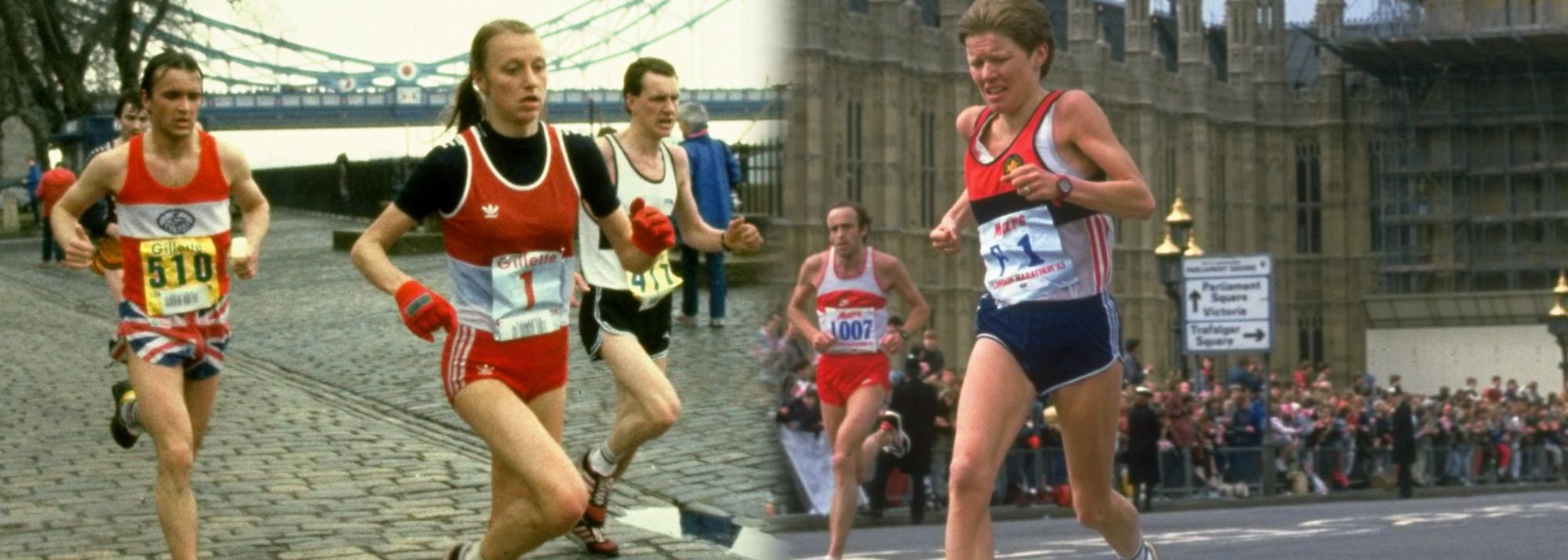Grete Waitz and Ingrid Kristiansen in action in the London Marathon (© Allsport / Getty Images)
At the European Championships in Helsinki in 1971, two teenagers made the Norwegian team for the women’s 1500m. Grete Andersen, 17, finished eighth in her heat and failed to make the final. Ingrid Christensen, 15, got bumped off the track in her heat and failed to finish. The experience came as such a jolt she concentrated on her first sporting love, cross country skiing, for the next seven years.
Both crestfallen rookies were destined to make a name for themselves as trailblazing standard-bearers of the women’s marathon, in their married names.
Four decades ago, on 17 April 1983, Grete Waitz won the London Marathon in 2:25:29.7. It was the fourth time in five years that the former Grete Andersen had recalibrated the world best figures for the 26.2-mile distance.
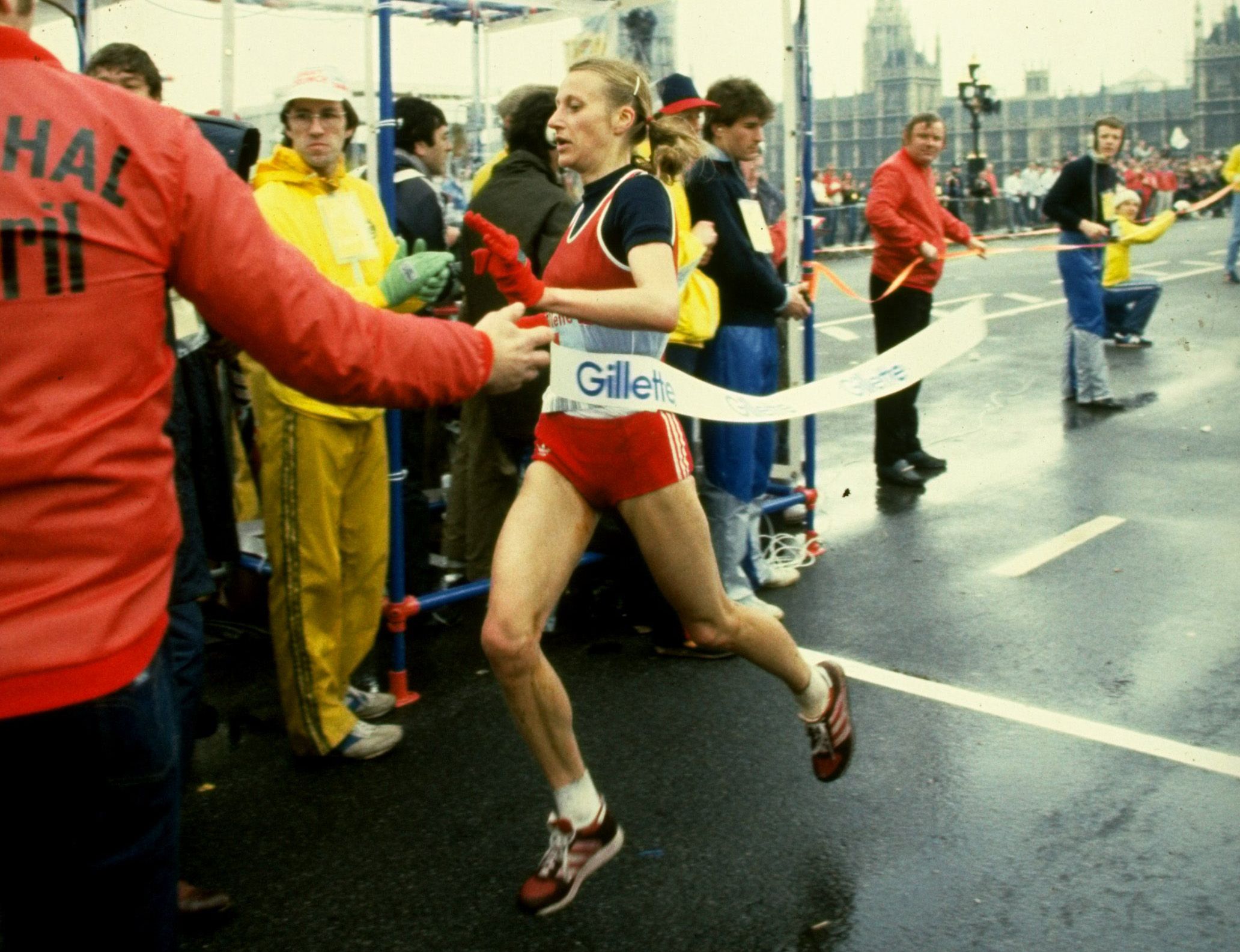
Grete Waitz wins the 1983 London Marathon (© Allsport / Getty Images)
The pig-tailed former geography teacher from the suburbs of Oslo had taken the frontier of women’s marathon running down by more than nine minutes, crashing through the 2:30 barrier in the process. It was the start of a Norwegian monopoly in the women’s race in London that was to last for six years.
Waitz won again in 1986, recording her fastest-ever marathon time, 2:24:54. By then, however, the baton of chief global frontierswoman of the event had already been picked up by her roommate from the 1971 European Championships.
Ingrid Kristiansen emerged from motherhood with a breakthrough victory on the streets of London in 1984, then brought the 2:20 barrier into sight a year later with a stunning 2:21:06 triumph that stood for 13 years as the women’s marathon world best. The former Ingrid Christensen won again in 1987 and 1988, making her the most successful woman in the history of the London Marathon.
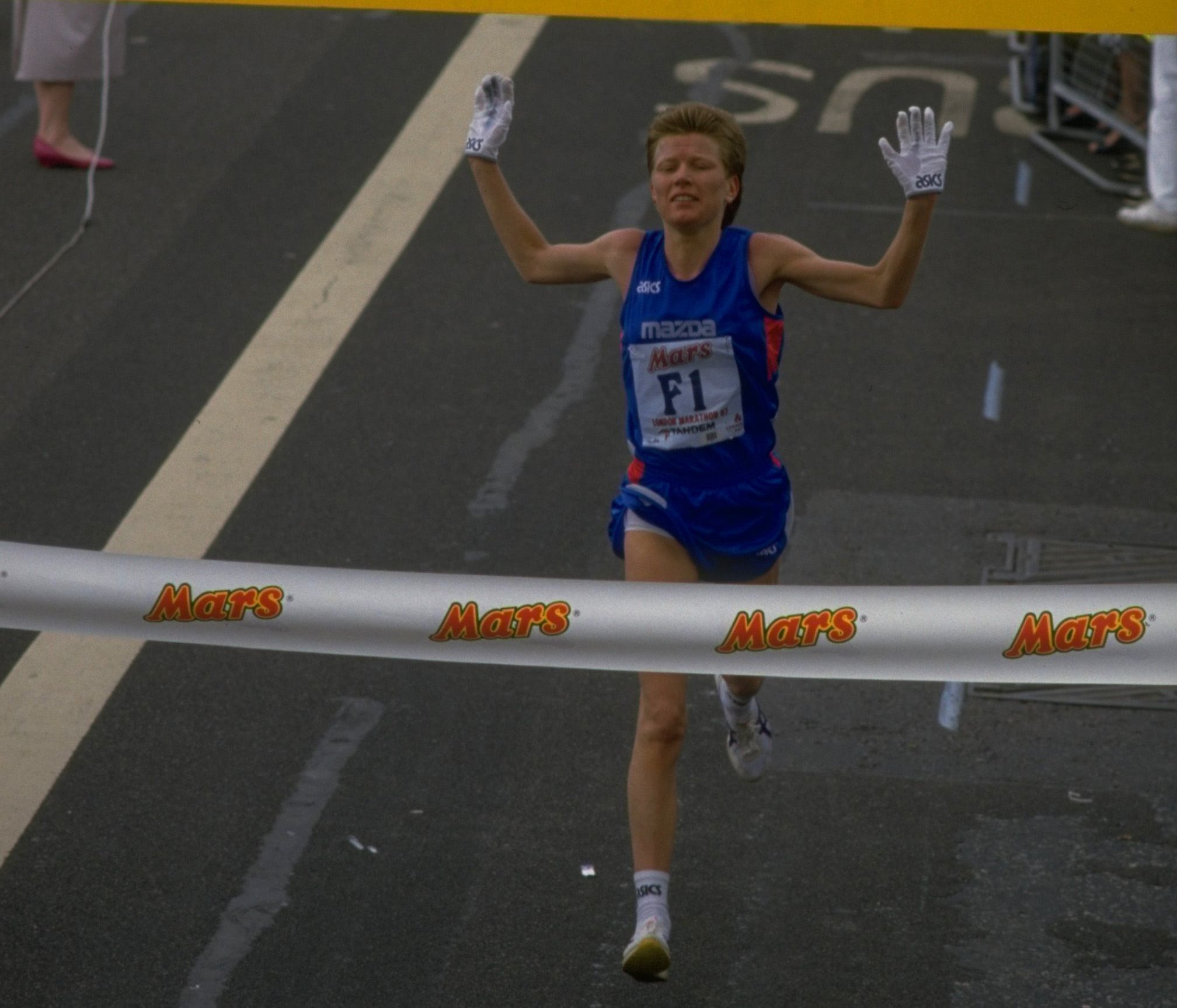
Ingrid Kristiansen wins the London Marathon in 1987 (© Allsport / Getty Images)
In 1983, Waitz beat the opposition and the clock in cold, wet conditions – and despite being afflicted by a recurrent knee injury and the tightening of her quadriceps as the race progressed. She crossed the line with the overhead clock showing 2:25:28 but the time was corrected to 2:25:28.7, equalling what was then regarded as the women’s world best. (New Zealander Alison Roe’s winning time from the 1981 New York Marathon was disqualified in later years as the route used in the Big Apple in 1981 was found to have been only 42.047km, a shortfall of around 28 seconds).
“I don’t consider this to be a very good racing day for me,” the self-effacing Waitz insisted at her post-race press conference. “I had too many problems during the race. The record will be beaten tomorrow anyway.”
So it was. The following day, Joan Benoit of the USA stunned the running world with a 2:22:43 performance in Boston.
Nevertheless, the year of 1983 proved to be the pinnacle of Waitz’s own remarkable running career.
Two months before her return to peak marathon form in London, she had re-emerged from injury to regain the world cross country title at Gateshead. It was her fifth senior world cross country crown, a feat that remains matched only by the pioneering US women’s distance runner Doris Brown Heritage, whose five wins came in the days when the event was still known as the International Cross Country Championships.
Waitz proceeded to become the first ever women’s world marathon champion. At the inaugural World Athletics Championships in Helsinki in August 1983, she ran a brilliant tactical race to win in 2:28:09, finishing three minutes clear of US runner Marianne Dickerson.
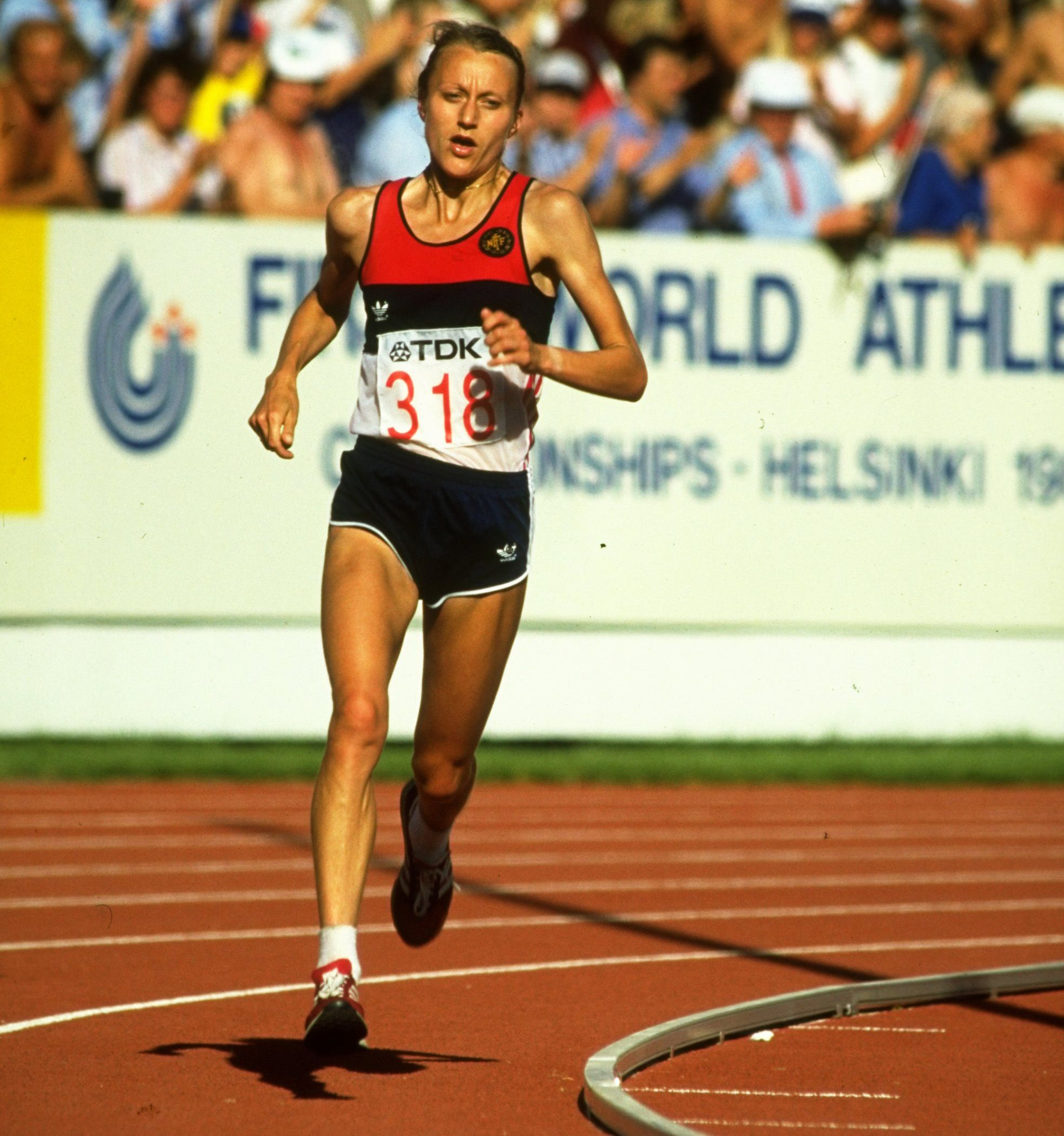
Grete Waitz on her way to marathon victory at the inaugural World Championships in Helsinki (© Allsport / Getty Images)
Frustratingly, Olympic marathon gold proved beyond her grasp in Los Angeles in 1984. Benoit emerged a clear winner in her home country. Waitz had to settle for the consolation of silver, with the diminutive European champion Rosa Mota of Portugal third and Kristiansen fourth.
Grete’s marathon greatness had not yet been exhausted. Her second London win, in 1986, was the fastest marathon of her career: 2:24:54. Then, in 1988, came the last of her nine New York marathon victories.
The irony was that Waitz became a marathon runner almost by accident. She had been considering retiring from international competition to concentrate on teaching when her husband and coach, Jack Waitz, persuaded her to give the event a try in New York in 1978.
She had never run more than 16 miles before and saw the trip principally as a second honeymoon. The day before the race, she went sightseeing up the Empire State Building and enjoyed a slap-up dinner of prawn cocktail, filet mignon and ice cream, washed down by a bottle of red wine.
It came as a surprise to Waitz that she found herself suited to the demands of racing 26.2 miles, taking a chunk off Christa Vahlensieck’s 2:34:47.5 world best with her winning time of 2:32:29.8 – then returning to the Big Apple to cross the 2:30 Rubicon with 2:27:32.6 the following year, and 2:25:41.3 in 1980.
Before turning to the marathon, Waitz had set two world records on the track, both in the 3000m at the Bislett Stadium in Oslo: 8:46.6 in June 1975 and 8:45.4 in June 1976. By the time she retired from running in 1990, a bronze statue of her stood outside the famous track and field arena in the Norwegian capital.
The road racing shoes that Waitz wore during the 1982 season are also among the artefacts in the Museum of World Athletics (MOWA).

The Grete Waitz statue outside Bislett Stadium
Waitz died in 2011, aged 57, after a long, brave battle against cancer. The New York Times described her as “the most prominent female distance runner in history.”
And yet, from under Waitz’s direct shadow, Kristiansen emerged as a female distance running phenomenon in her own right.
Born in Trondheim, on Norway’s west coast, she became the first runner in history to simultaneously hold world records for 5000m, 10,000m and the marathon. She also became the first athlete to win world titles on the track, on the road and over cross country. All of her major achievements came after she became a mother in 1983.
As a cross country skiing prodigy, Kristiansen won the European junior title in 1974, was selected as a reserve for the Winter Olympics in Innsbruck in 1976, and finished 15th in the world championship 20km race in 1978.
In August 1978, however, she made the Norwegian team for the European track and field championships in Prague, selected alongside Waitz for the 3000m. Waitz took the bronze medal behind Svetlana Ulmasova of the Soviet Union in 8:34.3. Kristiansen finished 10th in 9:02.9.
Suspecting that the cardiovascular benefits she had gained from cross country skiing better suited her to the marathon, she followed her fellow countrywoman on to the roads. While Waitz improved her world best to 2:25:41.3 in New York in 1980, Kristiansen finished third in 2:34:24.9.
Two years after that, she won her first international medal, claiming European marathon bronze behind Mota and Italy’s Laura Fogli in Athens. In March 1983, as Waitz sped to a fifth world cross country title at Gateshead, Kristiansen trudged home a dejected 35th. On her return to Norway, she discovered she was four months pregnant.
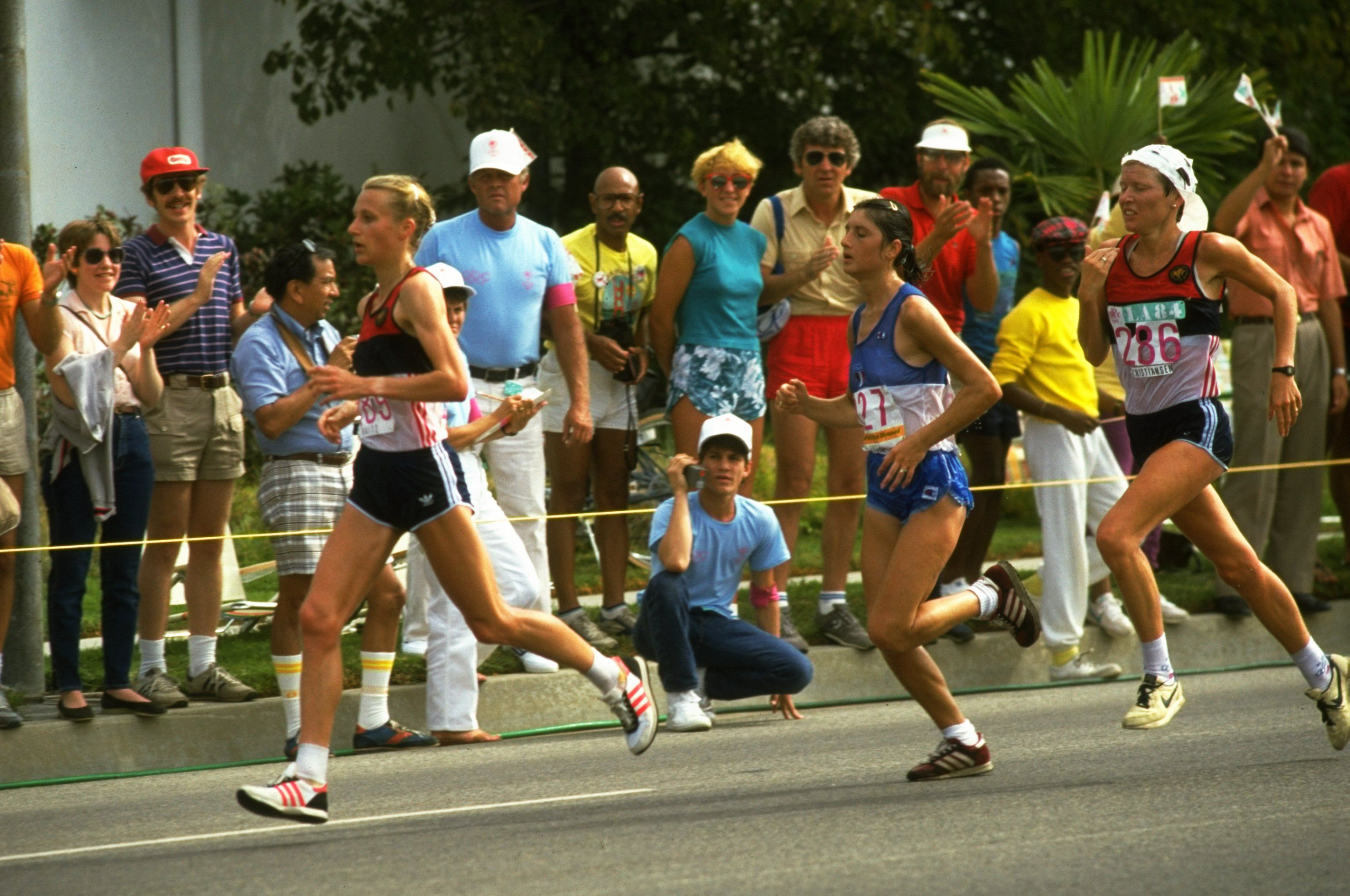
Grete Waitz leads from Laura Fogli and Ingrid Kristiansen during the 1984 Olympic marathon in Los Angeles (© Getty Images)
Just four days after giving birth to a son, Gaute, she was back in training – with a renewed vengeance.
Throughout the harsh winter in Oslo, now her home base with husband Arve, Kristiansen hammered away on a treadmill. She also used a cross trainer and cross country skiing in a regime she found nothing near as punishing as giving birth.
Five months after giving birth to Gaute, she broke 2:30 for the first time, winning the Houston Marathon in 2:27:51 in January 1984. Three months later, she won the Norwegian cross country title, inflicting Waitz’s first domestic defeat for 14 years.
It was a milestone moment for Kristiansen. Over the years she had collected “20 or 30” silver medals behind Waitz in various Norwegian championships.
“Grete showed what women could do if we trained like men,” Kristiansen told two-time US Olympic marathoner Kenny Moore in a Sports Illustrated interview. “She showed that Norwegian girls can beat the best. It was frustrating to be behind her for those years, but there was always the feeling, ‘If she can do it, I can do it, too.’”
A month later, in May 1984, Kristiansen made her big marathon breakthrough, winning the London Marathon in 2:24:26. In doing so, she broke Waitz’s European record by 1:2.7 and rocketed to second place behind Benoit on the world all-time list.
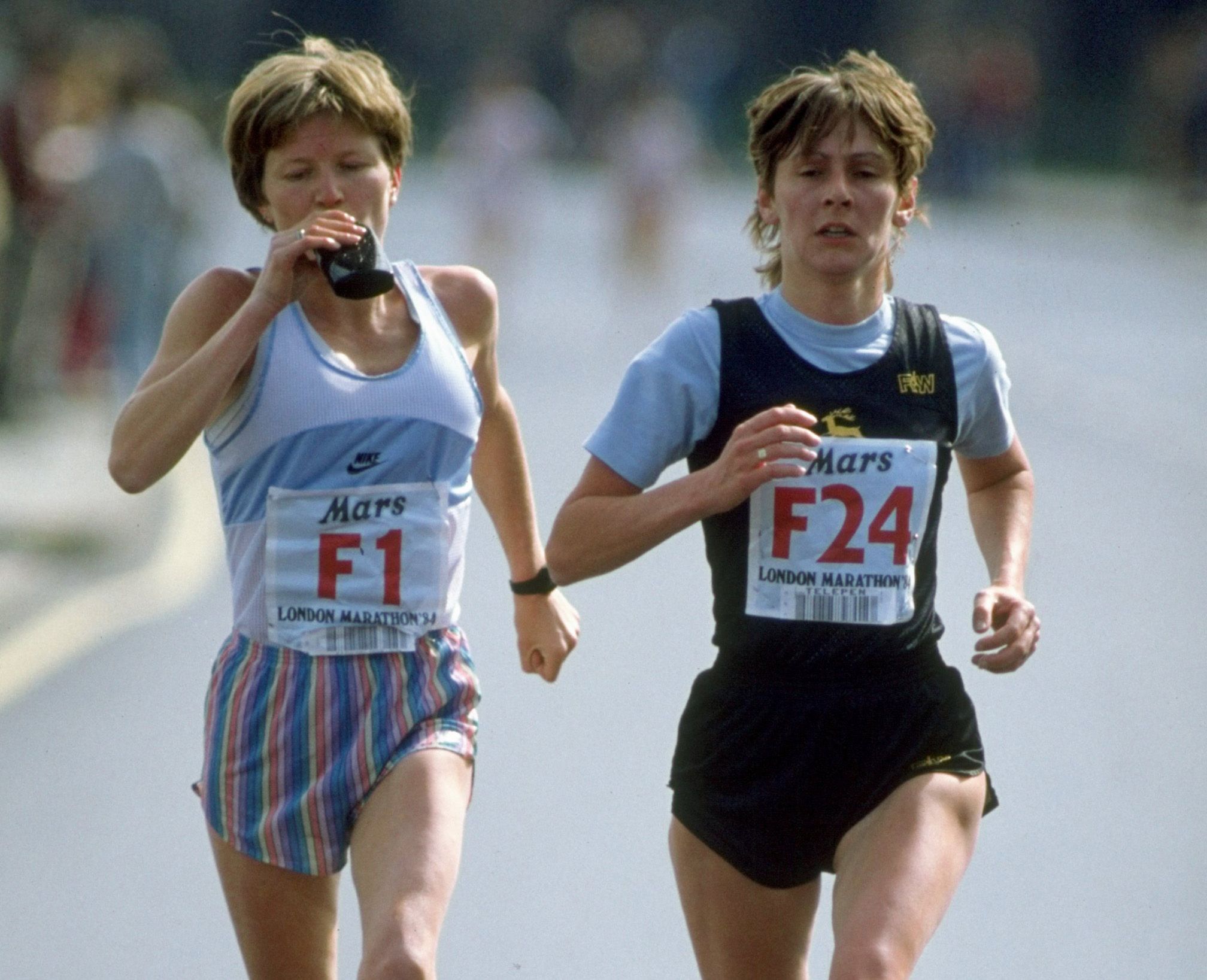
Ingrid Kristiansen and Mary Cotton in action during the 1984 London Marathon (© Allsport / Getty Images)
That outdoor season, after becoming the first woman to crack 15 minutes for 5000m by clocking 14:58.99 at Bislett, Kristiansen missed out on a medal in the first Olympic women’s marathon, finishing fourth behind Benoit, Waitz and Mota.
The disappointment drove her on to the dizzy height of her 2:21:06 world best in the 1985 London Marathon, an improvement of 1:37 on Benoit’s global mark. It stood until 1998, when Tegla Loroupe ran 2:20:47 in Rotterdam.
She had been on sub-2:20 pace at 20 miles, which she reached in 1:46:30, but suffered from dehydration in the closing stages, having taken little liquid on board because of a stomach upset.
Kristiansen was never as quick again at the marathon, though she returned to win again in London in 1987 (2:22:48) and 1988 (2:25:41). On the track, she was unstoppable in 1986, improving her own 10,000m world record by almost 46 seconds with a 30:13:74 run at Bislett and regaining the 5000m world record from Zola Budd with 14:37.33 in Stockholm.
In 1987 Kristiansen won world 10,000m gold on the track in Rome and the 15km world road race championship in Monaco. Then in 1988, six days after retaining the latter crown in Adelaide, she gained what was to be her final global honour: following in Waitz’s footsteps as winner of the world cross country title in Auckland.
Simon Turnbull for World Athletics Heritage

